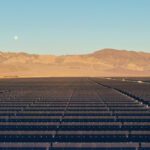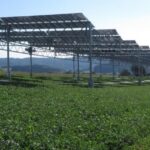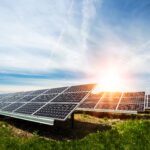Solar energy is already a significant part of the energy supply in the U.S., and it is poised to continue growing in the next few decades. In April, President Biden announced his target for the U.S. to achieve a 50–52% reduction from 2005 levels in economy-wide net greenhouse gas pollution by 2030. As the country transitions away from fossil fuels and toward cleaner energy resources, solar power will play an even more important role.
While landowners can benefit greatly from the income a solar farm generates, there is often reluctance to work with solar developers due to misconceptions about projects and potential outcomes. Four common myths are debunked below.
Solar Farms Are Financially Risky
A common misconception is that the chance of bankruptcy is tied to the project developer and that company’s creditworthiness. While project developers play a critical role in developing and constructing projects, once a project is operational, it is often secured by a long-term power purchase agreement (PPA) with a utility company.
It’s not uncommon for projects to trade between developers and investment groups at the time of operation, but the key point is that regardless of who owns the project, the utility will still be on the hook for purchasing power. A better question would be: what are the odds of the utility going bankrupt? While this is a possibility, it is much less likely.
End-of-Life Cleanup Is a Problem
Many landowners fear that panels, wiring, and sub-surface improvements will have to be cleaned up and removed on their dime when the project comes to an end. Most solar lease options include a decommissioning provision that requires the project owner to remove the panels at the end of the term.
This still leaves the question: what if the owner decides that it isn’t worth the expense to remove equipment? While decommissioning bonds can be placed on a project, and in some cases are required by local authorities, they come with an added expense that is a direct negation of money that could be paid to the landowner as rent.
Practically speaking, however, it’s important to remember that unlike other long-term infrastructure projects, such as wind turbines or cellphone towers, solar farm construction is simpler, involving a series of posts placed six feet into the ground. Removing them is far less expensive. Additionally, the metals in the panels are highly valuable. There is financial upside even in the salvage value of the project.
Time Is on My Side
Many landowners seem to think they can just wait forever, and that developers will always be as readily available and wanting as they are today. That is not really the case.
A key constraint in solar development is the utility infrastructure, including power lines and substations. Every power line has a specified capacity—like the lanes on a highway. Residential roads obviously handle less traffic than interstate highways, and as solar farms are developed, line capacity is a precious asset that will slowly disappear, at least until new infrastructure is added, which can take many years.
For example, a landowner located next to a substation that is initially a perfect fit for a project could lose that opportunity if another project that feeds back to that substation is constructed down the road. The capacity could well be gone by the time the landowner decides to move forward.
Land Is Tied Up for Years
Many landowners are worried about their land being tied up for several years before receiving rent. In cases where the property is currently being farmed or used for recreational purposes, there is no limitation on that use during the development period. While in other cases, a lease could limit use of the property, it’s not so in the case of solar.
After working closely with landowners and developers over the past few years, National Land Realty has found that it helps for landowners to be specific about their concerns. For example, what happens when construction begins in the middle of a growing season and a landowner’s entire crop is ruined? Developers are often happy to include crop provisions to compensate the landowner for the damages.
One unavoidable challenge with developing a solar project is that it takes time. Developers must invest extensively in engineering, interconnection applications, permitting activities, and more, all prior to knowing if the project will come to fruition. While it may seem like projects are moving slowly, there are legitimate reasons for the time and there are investments being made aside from option payments made to landowners during the development period.
Solar farms offer landowners a golden opportunity. Well-informed owners can better evaluate the true value and ultimately make the right decision for their property.
—Nathan Fabrick is vice president of corporate development with National Land Realty, a full-service real estate brokerage company specializing in farm, ranch, hunting, wildlife, timber, country, waterfront, and recreational land across the country.










